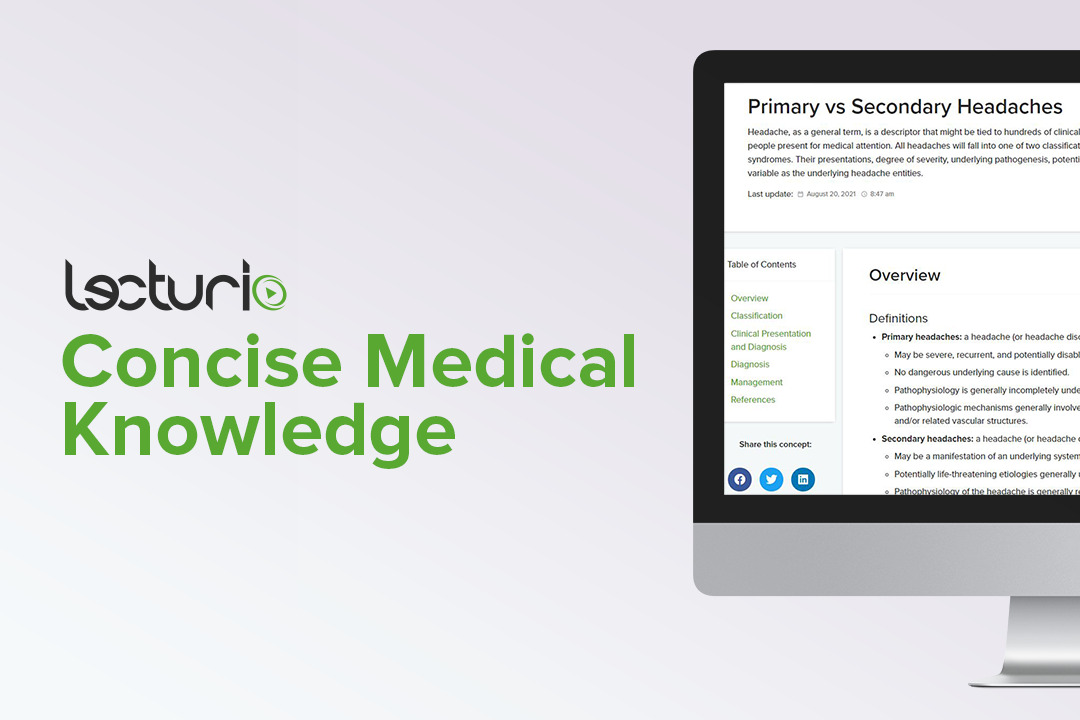Playlist
Show Playlist
Hide Playlist
Paroxysmal Hemicrania
-
Slides Headaches Paroxysmal Episodic Headaches.pdf
-
Download Lecture Overview
00:01 So cluster is one of the three or four TACs that we should consider. 00:05 The second is paroxysmal hemicrania. 00:09 Here we see a chronic recurrent headache syndrome, so episodes of headaches but these are shorter than cluster. 00:15 They're prominent autonomic findings, but the duration is only 2 to 30 minutes. 00:20 Attacks are severe with unilateral orbital or supraorbital or temporal pain that lasts 2 to 30 minutes. 00:28 These headaches are completely responsive to indomethacin, and this is very important. 00:33 We see indomethacin responsiveness with some of the TACs and not with others, and paroxysmal hemicrania by rule should be responsive to good doses of indomethacin. 00:43 And you can see the 150 mg here. 00:46 The headache is accompanied by ipsilateral conjunctival injection/lacrimation, nasal congestion/rhinorrhea, eyelid edema, facial and forehead sweating, miosis and ptosis. 00:55 So all those autonomic features that we see with a TAC. 00:59 And patient should have more than 5 attacks per day. 01:03 There should be no other cause, and have at least 20 attacks that fulfill this criteria to meet the clinical diagnostic criterion for paroxysmal hemicrania. 01:14 There are two forms of paroxysmal hemicrania, an episodic form and a chronic form. 01:20 This is episodic in about 20% of cases with remissions that can last more than one month. 01:26 The chronic form has no remissions within a year. 01:31 And if chronic from onset, then we think about some other secondary causes of this headache syndrome. 01:37 The main differential of episodic paroxysmal hemicrania is cluster. 01:41 And so paroxysmal hemicrania and cluster are important considerations to differentiate between. 01:47 We can do that and here's a table showing some of the differences between these two syndromes. 01:52 In terms of sex, episodic paroxysmal hemicrania really favors females whereas we see cluster more commonly in men. 01:59 The duration of the headache is different. 02:02 Cluster was that 15 to 180 minutes, whereas episodic paroxysmal hemicrania is typically shorter 3 to 30 minutes. 02:10 The frequency of attacks we see 1-8 per day with cluster often with a nocturnal predominance, and then 2 to 30 more attacks in patients with episodic paroxysmal hemicrania. 02:21 And indomethacin responsiveness is really important. 02:25 So paroxysmal hemicrania should be responsive to indomethacin and we only occasionally see that with patients with cluster. 02:33 What are some of the other causes of paroxysmal hemicrania? We can see vascular causes, infarcts, aneurysms and AVMs. 02:41 Tumors can do this, pituitary adenomas. 02:43 Occasionally a pancoast tumor with prominent sympathetic obstruction, meningiomas and parasellar gangliocytomas, inflammatory lesions, infections. 02:53 And so there are other secondary causes of this condition and in patients where the diagnosis remains obscure, we do consider additional imaging to rule out some of those secondary causes. 03:03 How do we treat paroxysmal hemicrania? Well, this is important because indomethacin is the drug of choice. 03:10 It's important for both the diagnosis and the treatment of these patients. 03:15 And indotests can be used to assess a patient's response, and typically that is a therapeutic dose, more than or at least 150 milligrammes per day of indomethacin. 03:25 20 to 100 milligrammes may be sufficient for maintenance, but we consider that higher dose for the initial test. 03:32 We do consider gastric protection because one of the side effects of indomethacin is gastric problems. 03:39 The headache usually recurs after discontinuation, and there is no tachyphylaxis where we need increasing doses of the indomethacin over time. 03:50 For some patients we can try NSAIDs, if indomethacin needs to be stopped for some reason, in COX-2 inhibitors are a treatment of choice. 03:57 Verapamil, acetazolamide, topiramate have also been used in certain cases and been effective. 04:04 Calcium channel blockers may work in the episodic form of this disease. 04:07 And headaches are usually too brief to consider abortive therapy like oxygen or injectables or other abortive treatments because of the short duration of these episodes.
About the Lecture
The lecture Paroxysmal Hemicrania by Roy Strowd, MD is from the course Headache.
Included Quiz Questions
What is the usual duration of a headache due to episodic paroxysmal hemicrania?
- 2–30 minutes
- 15–180 minutes
- 1–10 minutes
- 1–2 hours
- 3–24 hours
What is the drug of choice in the treatment of a patient with episodic paroxysmal hemicrania?
- Indomethacin
- Gabapentin
- Oxygen
- Triptans
- Injectable botulinum toxin
Customer reviews
5,0 of 5 stars
| 5 Stars |
|
5 |
| 4 Stars |
|
0 |
| 3 Stars |
|
0 |
| 2 Stars |
|
0 |
| 1 Star |
|
0 |




